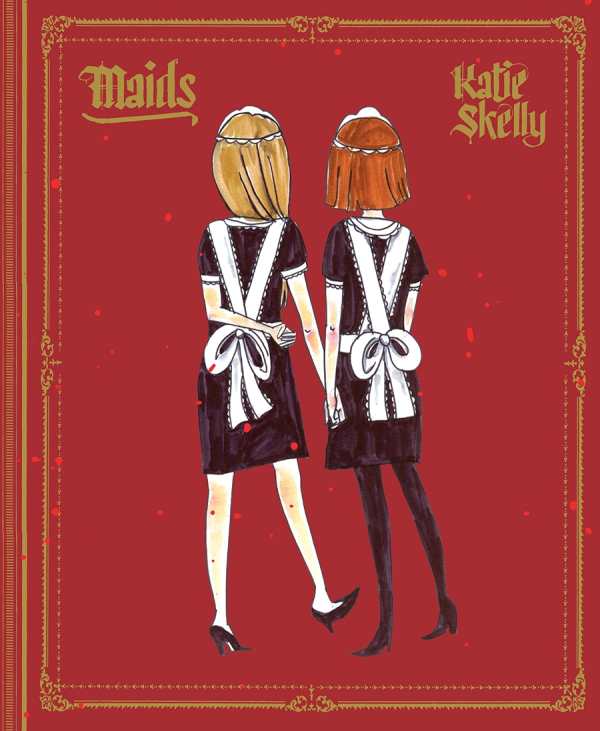Maids
The true crime graphic novel Maids concerns a pair of horrific murders in 1930s France.
As Lea arrives to join her older sister, Christine, at the Lancelin home where both are employed, the similarity between a detached eyeball and the house’s doorbell is examined. It’s a gory bit of foreshadowing that’s followed by a dreamlike, claustrophobic tone as Christine helps Lea adapt to her new job. The hours are long, and their employers’ treatment of them is poor. The girls resort to petty thefts and tricks, like placing a maggot on a cake, to satisfy their resentment. They retreat into their close bond, which was formed earlier, when they navigated family troubles and life in a convent.
The girls’ codependency and mental instability, the tension that exists between Madame Lancelin and her daughter, and the dehumanizing differences that follow class and status combine, resulting in slow-building tension that culminates in a final, bloody confrontation.
Characters are drawn in a sleek, straightforward style, making the the art’s suggestive imagery and symbolism, as in a scene where Lea uses scissors to snip the head of a caged bird, more affecting. The script is spare, with flashbacks used to reveal the girls’ history; it tracks their descent into homicidal rage with disturbing details, including of their altered version of the Lord’s Prayer: “As we destroy those who trespass against us.”
The Papin sisters’ crime still fascinates sociologists and scholars, as do its examples of the hopeless exhaustion of the lower classes and the bored entitlement of the wealthy. This is the backdrop, rich with subtext, against which the murders’ larger societal implications are studied. But Maids is, first and foremost, a gripping, visceral graphic account of true crime.
Reviewed by
Peter Dabbene
Disclosure: This article is not an endorsement, but a review. The publisher of this book provided free copies of the book to have their book reviewed by a professional reviewer. No fee was paid by the publisher for this review. Foreword Reviews only recommends books that we love. Foreword Magazine, Inc. is disclosing this in accordance with the Federal Trade Commission’s 16 CFR, Part 255.

